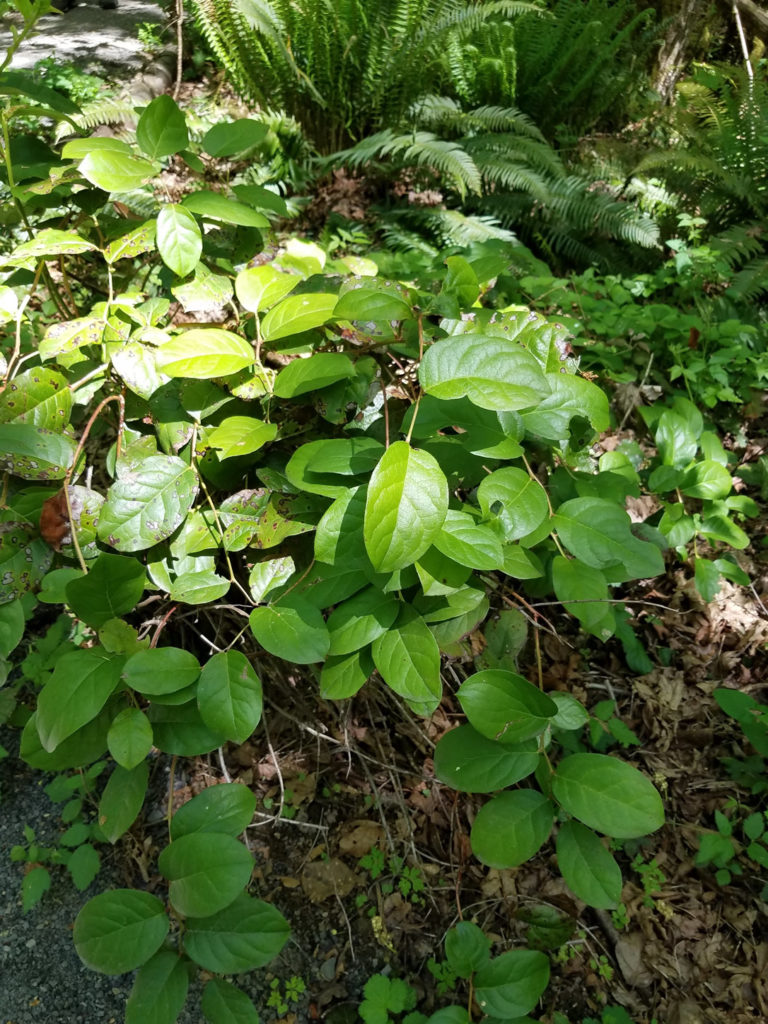
Salal, Gaultheria shallon
Ericaceae – Rhododendron and blueberry family
 “Gaultheria” is derived from the name of the Quebec physician and naturalist Jean Gaultier (1708-1756). “Shallon” is the Latinized form of the Native “salal” or “shalal.”
“Gaultheria” is derived from the name of the Quebec physician and naturalist Jean Gaultier (1708-1756). “Shallon” is the Latinized form of the Native “salal” or “shalal.”
This robust evergreen shrub has young growth of light green foliage and pinkish stems set upon a background of lustrous dark green foliage. The ovoid leaves are leathery and shiny with a pointed tip and fine serrations. The flowers are urn-shaped lanterns that transform into juicy black-purple berries up to one centimeter in diameter during summer and fall. The berries were eaten fresh, or dried, mashed, and compressed into loaves weighing up to 10-15 pounds for winter use by the lower Chinookan people. Large leaves were used to line cooking pits. Chewed leaves were used on burns and sores, making use of the astringent property of tannic acid. Other Native groups used the leaves either chewed or as a tea for relief of heartburn, colic, or diarrhea. The Makah smoked a dried and pulverized mixture of salal and kinnikinnick (Arctostaphylos uva-ursi) leaves. Explorer and botanist David Douglas was so impressed with salal in 1825 that he sent seeds to England for cultivation. Although salal created a sensation it never became the premier berry plant that Douglas had envisioned for Europe. In the Pacific Northwest however, salal is a very valuable landscaping shrub for its lustrous and evergreen texture. It is drought resistant when established and provides excellent habitat and food for wildlife (5-66).
Information courtesy of “The View From Springbrook Park; an Illustrated Natural History” by Ed Chinn.
Photos taken by Laura and Michelle Tanz
Sponsored by Friends of Springbrook Park; Lake Oswego, OR